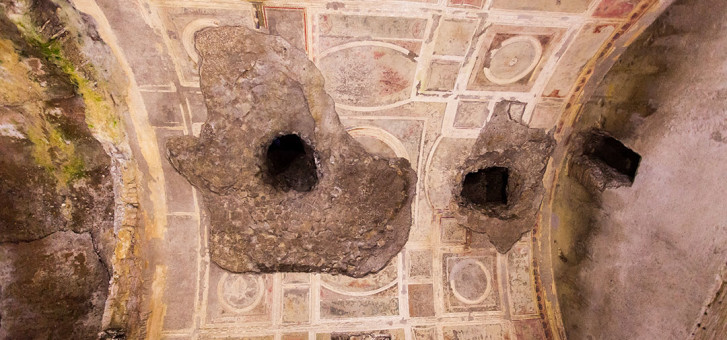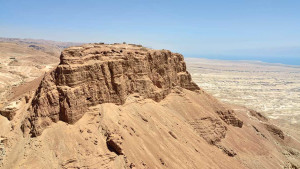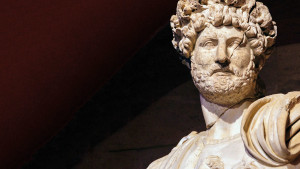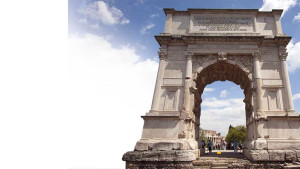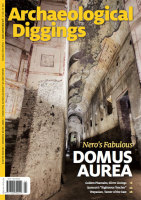The story of Emperor Nero and his Domus Aurea (Latin for Golden House) is one of most fascinating of ancient times. Nero was the last aristocrat to become princeps of the Roman Empire, back in AD 54, and he was definitely the most eclectic, creative and, as some may say, craziest among the Roman emperors (see Suetonius, Vita Neronis, 69: “Qualis artifex pereo,” which translates in English to, “What an artist dies in me” said by Nero before dying in AD 68). One among his many obsessions was to have a palace commensurate with his rank, surpassing in its beauty, splendour and ostentation all others built in Rome to that time. And thanks to his stubbornness and ruthlessness, he got exactly what he wanted.
When Nero became emperor, the Palatine Hills hosted the homes of his predecessors Emperor Tiberius and Emperor Augustus, with the latter also building his horti (garden) on the nearby Esquiline Hill. A small artificial lake nestled in the small valley between the two hills, where, half a century later, the Colosseum would be built. The surrounding neighbourhood of these hills had a reputation as among the worst in Rome. Nero decided to build a domus transitoria right in the valley between the two hills, a temporary palace that connected them, redesigning the lake itself and including it in his new, extremely luxurious villa.
However, as grand as his plan was, this was still only a temporary solution for him. He had something more ambitious in mind. His dream was to build an even bigger, grander palace, whose memory would last even after his death. The realisation of his idea required him to make some harsh decisions, including razing everything in the area to the ground. It is suggested that it was to this purpose that he planned the great fire of AD 64, for which he blamed the Christians. The fire was frightful and immense, devastating seven regiones (districts) of the city of Rome and seriously damaging another three.
The event allowed the emperor to dispossess the Velia, Oppian and Celio Hill and build his dream house, the Domus Aurea. This new palace was a major construction, a realm divided into two distinct residences, one for private and one for public use, set amidst marvellous woods, sweet meadows and productive vineyards. These two buildings did not resemble the usual imperial residences, which were usually broad and welcoming, but rather more like those villas dedicated to rest and relaxation, such as were located on the Lazio and Campania coasts. They extended in length rather than in breadth, with quite a bizarre appearance.
The domus for public interactions was located on the Velia Hill, facing the other palace and in front of where the Coliseum is now. The visitor entered via an enormous vestibulum, a sort of colonnade where, at its centre, stood a statue of Nero as the sun god. From this hall it was possible to access the interior of the public house where, after traversing several corridors, the visitor would arrive at the famous coenatio principalis rotunda, a round room with a dome that rotated, following the stars, something like a modern-day planetarium.
The corridors faced the stagnum (lake), which after a reconstruction by the emperor’s architects and engineers, was shaped into an immense rectangular basin. The service rooms were located around the lake and were often used during banquets and celebrations, to which lower ranking Romans were invited. It is well-known that Nero, in his delusions of omnipotence, did not escape but rather desired direct contact with his people, as he liked to feel loved and appreciated. The decorations of the domus were rendered by a talented painter who historians have never been able to identify, except to note that Pliny the Elder named him in one of his works. Many of the frescoes adorning the domus walls were likely produced by him, whoever he was.
Unfortunately, the private residence of Nero has suffered from many outrages along the centuries. A massive fire damaged it in AD 104, then only five years later, Emperor Trajan decided to demolish the upper floor completely, using it as fill, burying the ground floor, upon which he constructed his thermal baths. The ruins of these and the Oppian Hill upon which they are situated have concealed the Domus Aurea for centuries. The site was so completely buried that painters of the Renaissance who entered the monument thought they were actually entering caves. Hence, they named the pictorial style inspired by the Domus Aurea’s decorations as grottesco, literally, “of a cave”.
The hill and Trajan’s baths are not only guilty of having hidden Nero’s palace for centuries but also of threatening its survival. Archaeologists have long been aware of the fragility of the site, which was forced to close in 2005 due to persistent water damage in several halls. And they were aghast when they witnessed a major collapse in 2010. Even if no-one was injured and no decoration was lost, the event highlighted the risk brought to the fragile site by the tonnes of ground, trees, structures and even cars and buses above. Thus the Soprintendenza, the Italian authority in charge of restoration works, decided to embark on an on-going and ambitious project to ensure the survival of the site with a view to fully open it to the public.
The mission is not easy, however, as there are several factors impacting and menacing the Domus Aurea, attacking the site from below and above. The hill weighs on excavated structures that were not originally underground and which no longer have the support of the rubble and soil fill that has sustained them over the centuries. Further, water seepage has undermined the solidity of the palace and altered the average humidity within the subterranean ruin. This has resulted in its frescoes detaching from the walls, as well as the proliferation of bacteria and mould which corrode the still well-preserved paintings.
Finally, the palace is threatened by the Oppian Hill Park itself, where the roots of trees planted in 1936 are slowly breaking into the subterranean walls.
Internally, archaeologists and conservation experts are working on the consolidation of the structures, detaching the most endangered frescoes and protecting the remainder with hydrocarbon-derived isolating solutions. The largest part of the project is, however, taking place just outside the Domus Aurea, through the implementation of the Integrated Protection and the Monitoring Systems. These will involve the complete replacement of the ground above the monument with a 70 per cent lighter soil, which will sit above a simple waterproof layer, part of a complex drainage system that includes monitoring mechanisms. This will guarantee a high level of insulation, simultaneously maintaining humidity at a precise level. The ambitious project has already been tested in one of the 22 basins into which the 4 acre- (16,000-m2) Domus Aurea zone has been divided. The aim is not only to provide protection to the site but also to redevelop the area, building a park reflecting the original Roman outlook to be enjoyed by contemporary visitors. While the arrangement of the flower beds copies the disposition of the halls and courts of the
the Domus Aurea below, the plants and the grass deployed reflect those that ancient Roman visitors would have had in their own horti.
The main obstacle to the realisation of this four-year project, not surprisingly, is its cost: completing all seven stages will require some €31 million ($A43m). Thus, the Soprintendenza is seeking private money from patrons and in the age of social media, a crowd-funding campaign to complement the insufficient public funding.
Nonetheless, the monument is now partly reopened to the public on weekends. Some 50 halls open to the public give a good idea of the maze of corridors and rooms which fascinated such artists as Michelangelo and Raphael. Even if most of the marbles and gold adornments were detached or relocated by Emperor Trajan, the frescos portraying mythological lovers or intricate floral decorations are still breathtaking.
The magnitude and complexity of the spaces give a good impression of how the Domus Aurea would have looked in its glory: the richly decorated room of the Golden Vault, the vast cryptoportic (covered corridor) or the Octagonal room where the sun lit up different alcoves depending on the time of the day. And all this, within a silent labyrinth in the midst of chaotic, central Rome.
To the visitor, it is now possible to understand why, when upon entering his immense, luxurious palace, Nero said, “Good, now I can at last begin to live like a human being!"
- Article and Photography by Marco Merola and Lorenzo Colatoni

